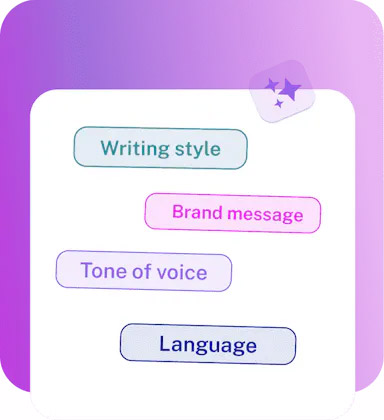 How to Craft the Perfect Tone: Developing Your Brand Voice for AI Applications
How to Craft the Perfect Tone: Developing Your Brand Voice for AI Applications
In today’s competitive business environment, brands are often willing to invest millions to create comprehensive graphical style guides that keep their visual branding consistent across all platforms. However, an equally crucial—but often overlooked—element of branding in the digital age, is creating a unique and consistent conversational voice for AI applications. As customers engage more frequently with AI systems, developing a personalized, branded voice has become pivotal to enhance the user experience and foster brand loyalty.
Your AI Applications Could Be a Customer’s First Brand Encounter: Ensure They Make a Positive Impact
Learn how to make your AI ‘talk’ on-brand with these 10 steps:
Creating a branded tone of voice for conversational AI applications can be a rewarding endeavor if your brand is equipped with the right steps to guide the process. These 10 crucial steps take you from the initial stages of identifying your brand’s core essence to the final stages of evaluating user feedback and continual refinement of the voice:
 1. Identify your brand essence
1. Identify your brand essence
This is the very core of what your brand represents. It translates into the AI’s voice and interacts with your customers. Your brand essence might include values such as integrity, innovation, or excellence. This process involves introspection and a detailed understanding of your brand’s positioning.
2. Analyze the target audience
Understand the needs, aspirations, and language style of your audience. Consider demographic details like age, location, and cultural background to craft a voice that resonates with them. The more you focus on the audience, the more engaging and effective the AI’s tone will be.
3. Examine brand language
Check your existing content across communication channels, such as websites, blogs, ads, and social media. Identify key phrases, industry-specific language, and the style of communication that your brand uses. This helps to create a coherent voice for your AI that aligns with your brand language.
4. Define AI persona
Develop an AI personality that aligns with your brand traits and resonates with your audience. Choosing the right persona is vital as it gives human-like qualities to your AI, making it easier for customers to relate to it. It could be a friendly guide, an enthusiastic helper, or an empathetic listener, depending on your brand and audience.
 5. Select tone attributes
5. Select tone attributes
Choose specific tone attributes that your AI should consistently use in interactions. These may include friendliness, professionalism, humor, or sophistication. They’ll set the mood for your conversations and provide a consistent experience to your audience.
6. Develop conversation scripts
Create sample scripts featuring a variety of conversation scenarios. These should be reflective of the chosen brand voice and style, and provide clear and effective responses to user inputs. The quality of these scripts plays a significant role in how the AI is perceived by users.
7. Create a style guide
A style guide is a critical resource as it sets the standard for the AI’s conversations. Highlight the nuances of grammar, choice of words, brand-specific terminology, and how to handle different types of conversations and situations. Ensure consistency in all interactions by providing clear guidelines.
8. Train the AI model
This critical step involves feeding the AI-branded conversation data. It helps the AI to learn and adopt your brand voice. Continuous training improves the accuracy and relevance of the AI’s responses, offering a more personalized user experience.
9. Iterate and refine
One of my personal favorites is conducting user testing and user feedback for continual refinement of the AI’s tone and interactions. This feedback loop helps to get a better sense of what works and what might need adjustment.
10. Feedback loop
Use analytics (chat logs) and customer feedback to identify which aspects are well-received vs. those that might be off-brand or ineffective. Capitalize on the positives and make thoughtful changes to areas that do not resonate well with your audience. Regular updates will ensure the AI’s tone stays consistent with the brand and continues to meet user expectations.